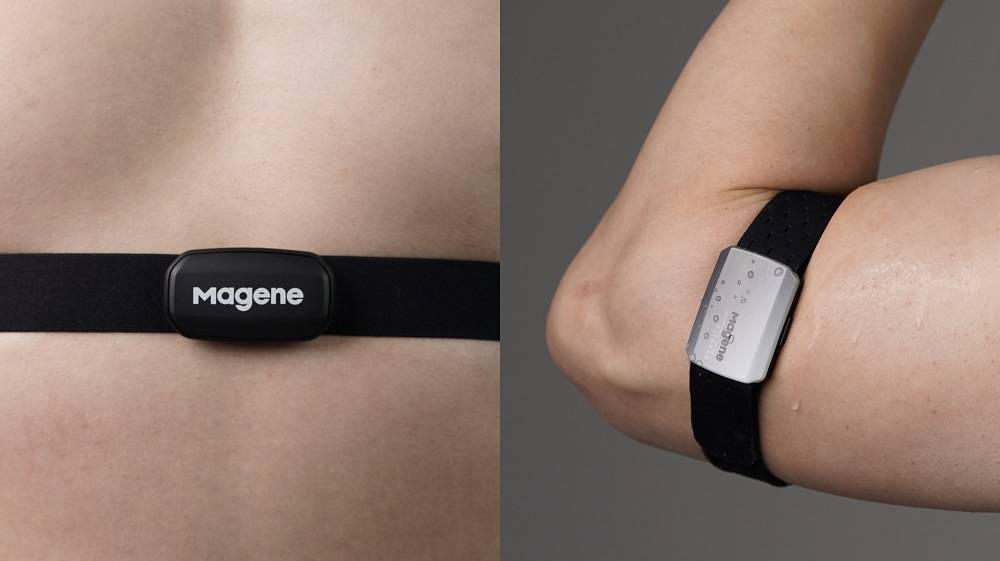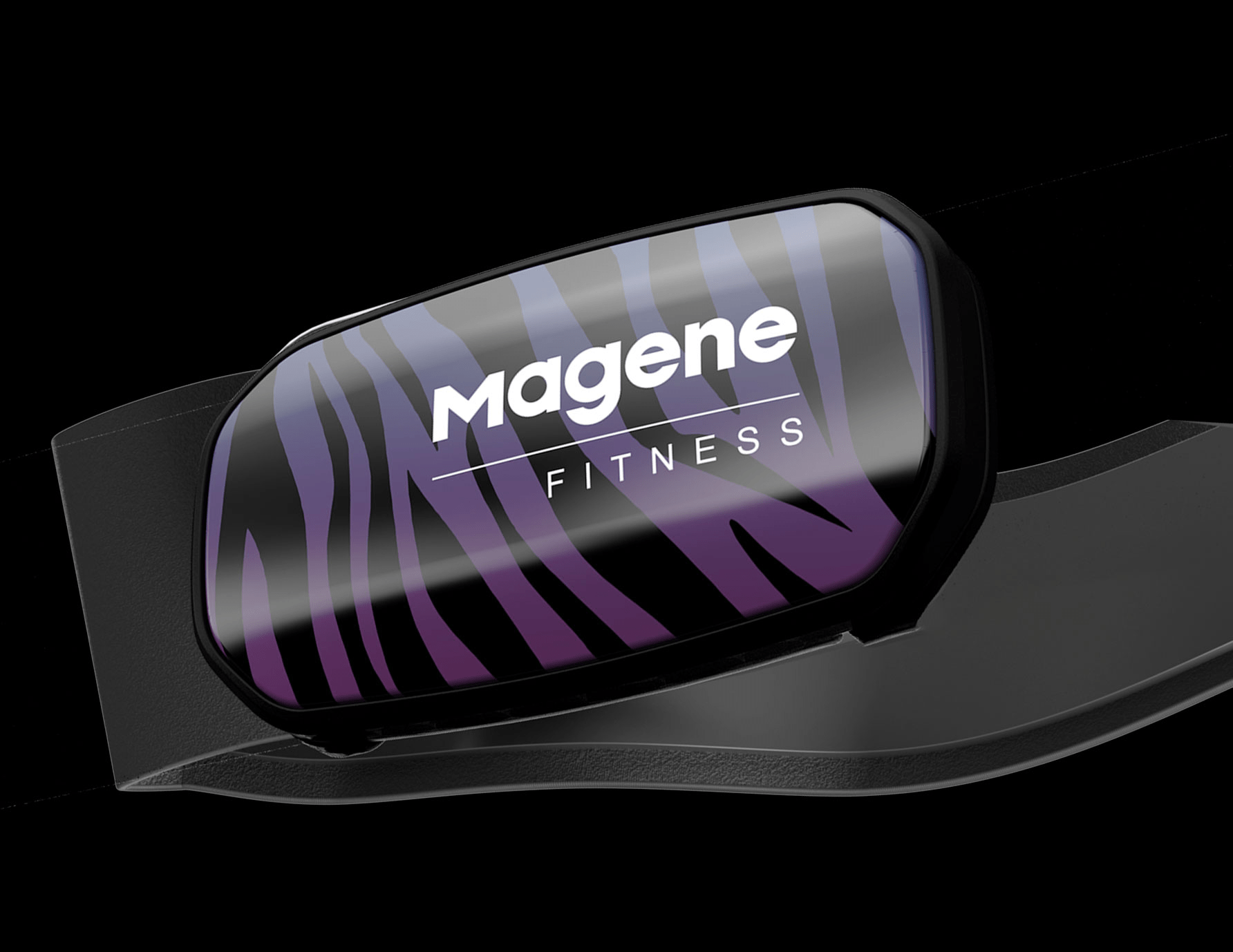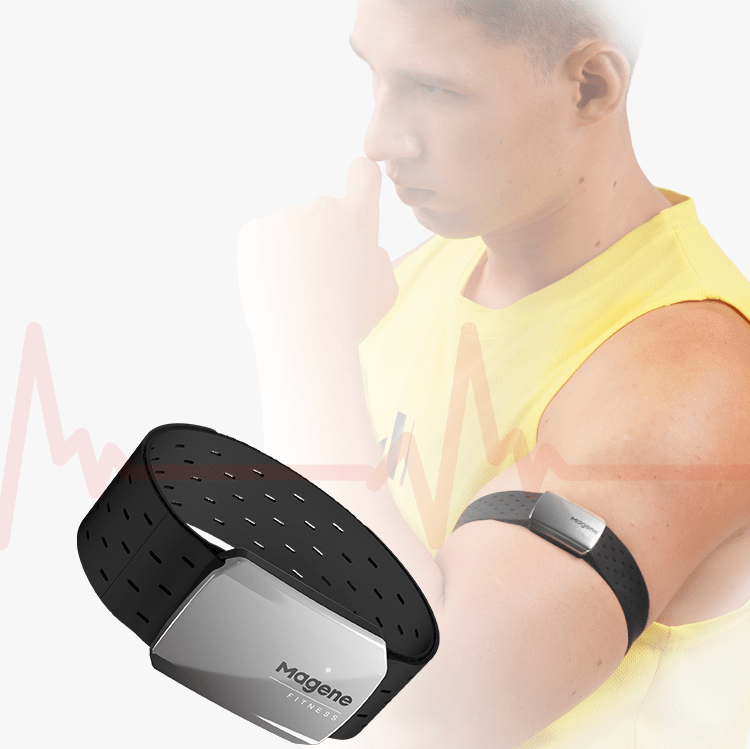Armband and chest strap heart rate monitors are doing the same things but in different ways. They all can guide you while training and can keep your workouts more effective. When we choose, we would like to know them well first.
The principles of heart rate detection are different.
Each heartbeat of the body produces cardiac pacing current. The heart rate chest strap is such a device that can sense the cardiac pacing current. The pole piece of the sensor is located on both sides of the anterior end of the chest strap. When wearing the chest strap, the pole piece in it collects the user’s fluctuation of the cardiac pacing current, which is then transmitted to the heart rate meter through wireless transmission technology and converted into a heart rate BPM value for observation. Currently, this is the mainstream and more accurate method of measuring the exercise heart rate.
An optical heart rate monitor measures the light absorbance of the hemoglobin in blood vessels to monitor the pulse. The heart rate sensor is equipped with an infrared beam emission circuit and a reflection-receiving circuit. The advantage of this heart rate measuring method is that it is very simple and does not need a chest strap. However, due to the extremely weak signal that is much vulnerable to external interference, this method may result in an inaccurate measurement result. In addition, it usually needs to work in a quiet environment.
Magene HRM80 heart rate armband can collect the variation data through the photodiode and calculate the heart rate. With the dual-beam array, you can acquire more accurate detection data and capture real-time heart rate changes more efficiently.
Performances in different sports
For running, cycling and regular dynamic exercise, the heart rate armband is fully competent for heart rate monitoring and its data accuracy is close to that of the chest strap. The advantages of the armband also include convenient and comfortable wearing and a long time of continuous working, taking Magene HRM80 armband for example, it can last up to 45 hours of workout after each charging. It is currently applicable to most physical sports such as running and cycling.
In this respect, the armband wins!
However, it was found that in other exercise tests such as Bobby jumps, where blood is in weightlessness and hyper gravity, the performance of real-time heart rate monitoring of the armband is less stable and accurate than that of the chest strap. Only about 5 seconds after stopping exercise can it return to normal.
The principle of the optical heart rate sensor is to calculate the heart rate by measuring the changes of the light reflection signal of the blood in arm/wrist. But, in Bobbie jumps, where the blood is weightless and overweight, the optical sensor cannot process filtering, thus resulting in inaccurate data measuring. The heart rate chest strap, however, has no such trouble. It calculates the heart rate by measuring weak changes of electrical current in the human body through an electrode.
So, from this perspective, the chest strap wins!
Above all, the armband outperforms the chest strap in comfortable wearing while the chest strap enjoys a higher accuracy.
The armband is more suitable for sports where hand strength can be kept stable, such as running, cycling, yoga, etc. The chest strap is more suitable for the most intense exercises and can meet the need for professional heart rate monitoring.
Get to know more heart rate monitors here: https://magenefitness.com/product_fitness_heartSensors.html

















































